Calendar of saints (Lutheran)
This article needs additional citations for verification. |
| Part of a series on |
| Lutheranism |
|---|
 |
The Lutheran Calendar of Saints is a listing which details the primary annual festivals and events that are celebrated liturgically by the Lutheran Church. The calendars of the Evangelical Lutheran Church in America and the Lutheran Church - Missouri Synod are from the 1978 Lutheran Book of Worship and the 1982 Lutheran Worship. Elements unique to the ELCA have been updated from the Lutheran Book of Worship to reflect changes resulting from the publication of Evangelical Lutheran Worship in 2006. The elements of the calendar unique to the LCMS have also been updated from Lutheran Worship and the Lutheran Book of Worship to reflect the 2006 publication of the Lutheran Service Book.
Structure
The Lutheran calendar operates on two different cycles, that of Christmas and that of Easter. Within these two cycles all events to be commemorated fall. Because Easter varies in date each year based on the vernal equinox and the phases of the moon, it is called a moveable feast (see: date of Easter). Dates affected by placement of Easter include the Baptism of our Lord, Ash Wednesday and the start of Lent, the start of Easter itself, Pentecost, and Holy Trinity. Advent, the other moveable season on the calendar, comes exactly four Sundays before the start of Christmas (if Christmas falls on a Sunday, that day does not count), or the Sunday closest to St. Andrew’s Day (November 30). Like the other Western Church calendars, the first Sunday of Advent is also the first day of the liturgical year. The events commemorated on the Lutheran calendar fall into three different categories: Festivals, Lesser Festivals, and Commemorations.
Festivals
The Festivals are Nativity, Epiphany, the Baptism of our Lord, the Transfiguration, the Annunciation, Palm Sunday, Easter, the Ascension, Pentecost, Holy Trinity, All Saints, and Christ the King. Most of these festivals are tied to the moveable feast of Easter. Festivals take precedence over all other days, including Sundays, have their own collects and Eucharistic proper prefaces. Of the festivals, Christmas is considered to be twelve days in length (from December 25 until January 5) and Easter is fifty days in length (from Easter Sunday up to and inclusive of Pentecost). For Easter, Sundays are considered to be another part of the festival. For the Ascension which, falling on fortieth day of Easter, will always be on a Thursday, the festival is sometimes transferred to the Seventh Sunday of Easter in addition to or in place of the normal part of the Easter festival for that day.
There is another type of day which, while not a festival, is considered to be equal with a festival. These days, called Days of Special Devotion, are Ash Wednesday and all the days of Holy Week, especially Good Friday. These particular days, like other festivals, automatically take precedence over any event on the calendar and sometimes even over other festivals. A good example of this would be in 2005 when Good Friday and the Annunciation fell on the same day (March 25). The Annunciation was transferred to March 28, or the second day of Easter to make room for Good Friday.[1]
One unique feature of the ELCA calendar is that it has given congregations the options of two dates for the Transfiguration. Following most other Western Churches, the ELCA moved the Transfiguration from its 6 August date to the Last Sunday after Epiphany (the Sunday immediately preceding Ash Wednesday) as an option to the traditional Last Sunday after Epiphany in an effort to encourage a wider observance of the Transfiguration within congregations. However, the traditional date of 6 August was left on the calendar. Congregations were given the option of observing Transfiguration on the Last Sunday after the Epiphany and 6 August, thus leaving open the possibility that the Transfiguration could be commemorated twice within a calendar year.
Lesser Festivals
These are days which are associated with the life of Christ or the apostles and deserve attention in their own right. Lesser Festivals do not have priority over festivals and technically do not have precedence over ordinary Sundays. However, the Lutheran Book of Worship does permit the celebration of a Lesser Festival on Sundays where the normal color of the day would be green (that is, seasons after Epiphany or after Pentecost) or on the Sundays in Christmas. This is abrogated for patronal festivals (that is, the day commemorating the saint or event for which a congregation is named) provided that they do not take place in Lent, Advent, or Easter, in which case they must also be transferred to the next convenient weekday.[2] Most Lesser Festivals have their own collects and a few, such as All Saints have their own proper.
Commemorations
Commemorations are for individuals or events which have been noteworthy in the life of the Church and in the history of Lutheranism in particular. These days do not take precedence over any other festival day and if there is a conflict between a commemoration and a festival of any other rank, the commemoration is generally transferred to the next open weekday. If a commemoration falls on a Sunday where the color of the day is green, the collect for which that individual or event belong to could be said before the daily collect/prayer of the day or in place of it. For example, if September 13 fell on a Sunday and there was a desire to commemorate St. John Chrysostom, the pastor would recite the common of theologians and then the prayer of the day or the common of theologians on it own. The person may also be mentioned by name in the prayers of the faithful in addition to recitation of the applicable collect. Finally, their lives might be summarized or their teachings related to the day’s lessons in some way. [3]
In cases of conflict between commemorations (for example, November 11 with St. Martin of Tours and Søren Kierkegaard), there is no order of precedence and individual worship planners need to choose which commemoration, if any, to highlight. In some cases, several individuals are listed together (June 14 with St. Basil the Great, St. Gregory the Theologian, and St. Gregory of Nyssa) because of their close association with each other and they are thus designed to be commemorated as a unit, not as a choice between one or the other.[4]
The schedule of commemorations within the ELCA has been specifically designed so that there is at least one person on the calendar from each century so as to emphasize the continuity of Christian tradition.[5] Clearly, some centuries are have more commemorations than others, the largest number persons commemorated being in the first four centuries of Christian history and immediately following the Reformation. This leaves the space from the fifth to the fifteen centuries and the sixteenth to the twentieth centuries rather sparse. Nevertheless, it is a vast improvement over some calendars wherein only a very few persons, all from the patristic or reformation periods, were commemorated.
Differences from Other Calendars
The Lutheran calendar is most similar to the calendar of The Episcopal Church and thus to the Anglican Calendar of Saints, though like its close cousin, it bears resemblance to the Roman Calendar of Saints. However, the Lutheran calendar differs from both in two very significant ways, aside from an obviously heavy Lutheran accent. First, the Lutheran calendar, while commemorating many of the same events or persons, often does so on different days from either calendar (St. Cyprian of Carthage on September 16 for Lutherans, but September 15 for Anglicans and for Roman Catholics). In other cases (such as St. Valentine on February 14) individuals who have long standing within Western Christianity are not mentioned in the ELCA calendar, but may be mentioned in the LCMS calendar. In general, like the Anglican counterpart, the ELCA calendar has taken on many of the precedents established by the post-Vatican II reforms of the liturgy in the Roman Catholic Church.
The other significant difference is that the Lutheran calendar commemorates a wider variety of individuals than does either of its counterparts. Included on the calendar are musicians and artists who are associated with the Church, but are not typically thought of as “saints” in the classical sense. The intent is to provide a wider venue for commemoration of outstanding individuals who have served the Church through their vocations rather than simply commemorating the outstanding among the religious.
There is also no use of the title “saint” for anyone other than biblical persons (and even then the title is used with a certain degree of exclusivity). This is to prevent oddities of convention (such as St. Nicholas Copernicus) as well as to underline the Lutheran emphasis on the priesthood of all believers. Nevertheless, individuals who typically have “saint” affixed to their given name are still referred to as such in common discourse (so that St. Francis would still be called “St. Francis” rather than just “Francis”).
The previous North American calendar of the ELCA was also different from its European counterparts in that it does not give equal weight (and sometimes no mention) to persons who may be commemorated in Scandinavian regions. One example would be the absence of St. Lucia on December 13 who enjoys particular popularity in Sweden. But, Lutheran calendars also differ amongst one another in North America (though St. Lucia is commemorated by the LCMS on her traditional date); with the 2006 publication of Evangelical Lutheran Worship (ELW) as a replacement to the Lutheran Book of Worship (LBW). The calendar below is primarily based on the one used by the ELCA and the Evangelical Lutheran Church in Canada, with supplemental information specific to the LCMS from the 2006 Lutheran Service Book. The Wisconsin Evangelical Lutheran Synod have different, somewhat minimalized calendars when compared to what is seen here and has not been included. The additions and variations between the ELCA and the LCMS have been noted. Within the ELCA, This Far by Faith and Libro de Liturgia y Cantico both prescribe calendars with additional commemorations specific to the communities for which they were intended to be used (African Americans and Latinos respectively); these commemorations have been included in the calendar below but have not been specifically annotated in any way
The calendar for the ELCA is similar to other Western Calendars in that it does not commemorate any persons from the Old Testament. The calendars of the Orthodox Churches to have Old Testament individuals, and the Lutheran Church – Missouri Synod has done the same. At one point there was a proposal to include a day on the Episcopal Church calendar for Old Testament saints following the octave of All Saints (November 8), but this idea was ultimately rejected as tokenism.[6]
For calendars besides the Lutheran calendar, see: Calendar of Saints (Anglican), Calendar of Saints (Roman Catholic), and Calendar of Saints (Eastern Orthodox).
The Calendar of Saints
The event commemorated is listed with the type of event afterwards in parenthesis as well as the country where it is observed (if not commonly observed on that date in North America). For individuals, the date given is the date of their death or “heavenly birthday.” The single letter listed after each event is the designated color for vestments and paraments: White (W), Red (R) or Purple (P). Commemorations are noted as being specific to the ELCA or LCMS following the particular entry. Commemorations and Festivals that are held in common are not annotated.
January
- 1 Holy Name of Jesus (Lesser Festival) W
- 2 Johann Konrad Wilhelm Löhe, pastor, 1872 (Commemoration)

- 3
- 4
- 5
- 6 Epiphany of our Lord (Festival) W
- 7
- 8
- 9
- 10 Basil the Great, Bishop of Caesarea, 379; Gregory of Nazianzus, Bishop of Constantinople, c. 389; Gregory, Bishop of Nyssa, c. 385 (Commemoration) W – LCMS
- 11
- 12
- 13
- 14
- 15 Martin Luther King, Jr., renewer of society, martyr, 1968 (Commemoration) R – ELCA
- 16
- 17 Antony of Egypt, renewer of the church, c. 356 (Commemoration) W
- Pachomius, renewer of the church, 346 (Commemoration) W - ELCA
- 18 Confession of St. Peter (Lesser Festival) W
- 19 Henry, Bishop of Uppsala, missionary to Finland, martyr, 1156 (Commemoration) R – ELCA
- 20 Sarah, matriarch (Commemoration) W – LCMS
- 21 Agnes, martyr (Commemoration) R - ELCA
- 22
- 23
- 24 St. Timothy, pastor (Lesser Festival) W - LCMS
- 25 Conversion of St. Paul (Lesser Festival) W
- Week of Prayer for Christian Unity Ends
- 26 Timothy, Titus, and Silas, missionaries (Commemoration) – ELCA
- St. Titus, pastor (Lesser Festival) W - LCMS
- 27 Lydia, Dorcas, and Phoebe (Commemoration) – ELCA
- John Chrysostom, Bishop of Constantinople, 407 (Commemoration) W – LCMS
- 28 Thomas Aquinas, teacher, 1274 (Commemoration) W – ELCA
- 29
- 30
- 31
February
- 1
- 2 Presentation of our Lord (Lesser Festival) W
- 3 Ansgar, Archbishop of Hamburg, missionary to Denmark and Sweden, 865 (Commemoration) W – ELCA
- 4
- 5 The Martyrs of Japan, 1597 (Commemoration) R – ELCA
- Jacob, patriarch (Commemoration) W – LCMS
- 6
- 7
- 8
- 9
- 10 Silas, apostle(Commemoration) W – LCMS
- 11
- 12
- 13 Aquila, Priscilla, and Apollos (Commemoration) W – LCMS

- 14 Cyril 869 and Methodius 885, missionaries to the Slavs (Commemoration) W – ELCA
- Valentine, martyr, 270 (Commemoration) R – LCMS
- 15 Philemon and Onesimus (Commemoration) W – LCMS
- 16 Philipp Melanchthon, confessor, 1560 (Commemoration) R – LCMS
- 17
- 18 Martin Luther, doctor and confessor, renewer of the Church 1546 (Commemoration) W
- 19
- 20 Rasmus Jensen, pastor 1620 (Commemoration) W
- 21
- 22
- 23 Polycarp, Bishop of Smyrna, martyr 156 (Commemoration) R
- 24 St. Matthias, Apostle (Lesser Festival) R – LCMS
- 25 Elizabeth Fedde, deaconess 1921 (Commemoration) – ELCA
- 26
- 27
- 28
March
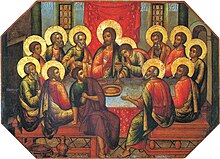
- 1 George Herbert, priest, 1633 (Commemoration) W – ELCA
- 2 John 1791 and Charles Wesley 1788, priests, renewers of the Church (Commemoration) W – ELCA
- 3
- 4
- 5
- 6
- 7 Perpetua and Felicity and companions, martyrs at Carthage 202 (Commemoration) R
- 8
- 9
- 10 Harriet Tubman, 1913; Sojourner Truth, 1883; renewers of society (Commemoration) W – ECLA
- 11
- 12 Gregory the Great, Bishop of Rome 604 (Commemoration) W – ELCA
- 13
- 14
- 15
- 16
- 17 Patrick, Bishop, missionary to Ireland 461 (Commemoration) W
- 18
- 19 Joseph, guardian of our Lord (Lesser Festival) W
- 20
- 21 Thomas Cranmer, Archbishop of Canterbury, martyr 1556 (Commemoration) R – ELCA
- 22 Jonathan Edwards, teacher, missionary 1758 (Commemoration) W - ELCA
- 23
- 24 Oscar Afnulfo Romero, Bishop of El Salvador, martyr, 1980 (Commemoration) R – ELCA
- 25 Annunciation of Our Lord (Festival) W
- 26
- 27
- 28
- 29 Hans Nielsen Hauge, renewer of the Church 1824 (Commemoration) W – ELCA
- 30
- 31 John Donne, priest 1631 (Commemoration) – ELCA
- Joseph, patriarch (Commemoration) W – LCMS
April

- 1
- 2
- 3
- 4 Benedict the African, confessor 1589 (Commemoration) W
- 5
- 6 Albrecht Dürer, artist 1589 (Commemoration) W
- Matthias Grünewald, artist 1529 (Commemoration) W
- Lucas Cranach, artist 1557 (Commemoration) W
- 7
- 8
- 9 Dietrich Bonhoeffer, theologian, martyr 1945 (Commemoration) R – ELCA
- 10 Mikael Agricola, Bishop of Turku 1557 (Commemoration) W – ELCA
- 11
- 12
- 13
- 14
- 15
- 16
- 17
- 18

- 19 Olavus Petri, priest, 1552; Laurentius Petri, Archbishop of Uppsala, 1573 (Commemoration) W – ELCA
- 20 Johannes Bugenhagen, pastor, 1558 (Commemoration) – LCMS
- 21 Anselm, Archbishop of Canterbury, theologian 1109 (Commemoration) W
- 22 Día de la Creación (Lesser Festival) W – ELCA
- 23 Toyohiko Kagawa, renewer of society, 1960 (Commemoration) W - ELCA
- 24 Johann Walter, musician, 1570 (Commemoration) W – LCMS
- 25 St. Mark, Evangelist (Lesser Festival) R
- 26
- 27
- 28
- 29 Catherine of Siena, theologian, 1380 (Commemoration) W – ELCA
- 30
May
- 1 St. Philip and St. James, Apostles (Lesser Festival) R
- 2 Athanasius, Bishop of Alexandria, 373 (Commemoration) W
- 3
- 4 Monica, mother of Augustine, 387 (Commemoration) W – ELCA
- Friedrich Wyneken, pastor, missionary, 1864 (Commemoration) W – LCMS
- 5 Frederick the Wise, Christian ruler, 1525 (Commemoration) W – LCMS
- 6
- 7 Carl F. W. Walther, pastor, theologian, 1887 (Commemoration) W – LCMS
- 8 Victor the Moor, martyr, 303 (Commemoration) R – ELCA
- Julian of Norwich, renewer of the Church, c. 1416 (Commemoration) W – ELCA
- 9 Nicolaus Ludwig von Zinzendorf, renewer of the church, hymnwriter, 1760 (Commemoration) W – ELCA

- Job, patriarch (Commemoration) W – LCMS
- 10
- 11 Cyrill, 869 and Methodius, 885, missionaries to the Slavs (Commemoration) W – LCMS
- 12
- 13
- 14 St. Matthias, apostle (Lesser Festival) R – ELCA
- 15
- 16
- 17
- 18 Erik, King of Sweden, martyr, 1160 (Commemoration) R – ELCA
- 19 Helena, mother of Constantine, c. 330 (Commemoration) W - ELCA
- 20
- 21 Emperor Constantine, Emperor of Rome, 337 and Helena, mother of Constantine (Commemoration) W – LCMS
- 22
- 23 Ludwig Ingwer Nommensen, missionary to Sumatra, 1918 (Commemoration) W
- 24 Nicolaus Copernicus, 1543; Leonhard Euler, 1783; teachers (Commemoration) W – ELCA
- Esther, matriarch, (Commemoration) W – LCMS
- 25 Bede, theologian, 735 (Commemoration) R – LCMS
- 26
- 27 John Calvin, renewer of the church, 1564 (Commemoration) W – ELCA
- 28
- 29 Juraj Tranovský, hymnwriter, 1637 (Commemoration) W – ELCA
- 30
- 31 The Visitation (Lesser Festival) W
June
- 1 Justin, martyr at Rome, c. 165 (Commemoration) R
- 2
- 3 John XXIII, Bishop of Rome, 1963 (Commemoration) W – ELCA
- Martyrs of Uganda, 1886 (Commemoration) R – ELCA
- 4
- 5 Boniface, Archbishop of Mainz, missionary to Germany, martyr, 754 (Commemoration) R
- 6
- 7 Seattle, chief of the Duwamish Confederacy, 1866 (Commemoration) W – ELCA
- 8
- 9 Columba, 597; Aidan, 651; Bede, 735; teachers (Commemoration) W – ELCA
- 10
- 11 St. Barnabas, Apostle (Lesser Festival) R
- 12 First Ecumenical Council, 325 (Commemoration) W – LCMS
- 13
- 14 Basil the Great, Bishop of Caesarea, 379; Gregory of Nazianzus, Bishop of Constantinople, c. 389; Gregory, Bishop of Nyssa, c. 385 (Commemoration) W – ELCA
- 15

- 16
- 17
- 18
- 19
- 20
- 21 Onesimos Nesib, translator, evangelist, 1931 (Commemoration) W – ELCA
- 22
- 23
- 24 The Nativity of St. John the Baptist (Lesser Festival) W
- 25 Presentation of the Augsburg Confession, 1530 (Lesser Festival) W
- Philipp Melanchthon, renewer of the church, 1560 (Commemoration) W – ELCA
- 26 Jeremiah, prophet (Commemoration) R – LCMS
- 27 Cyril, Bishop of Alexandria, 444 ( Commemoration) R
- 28 Irenaeus, Bishop of Lyons, c. 202 (Commemoration) W
- 29 St. Peter and St. Paul, Apostles (Lesser Festival) R
- 30
July
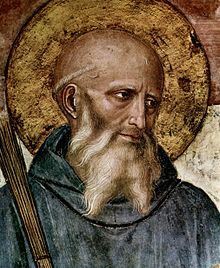
- 1 Catherine Winkworth, 1878; John Mason Neale, 1866; hymnwriters (Commemoration) W – ELCA
- 2
- 3 St. Thomas, apostle (Lesser Festival) R – ELCA
- 4
- 5
- 6 Jan Hus, martyr, 1415 (Commemoration) R – ELCA
- Isaiah, prophet (Commemoration) R – LCMS
- 7
- 8
- 9
- 10
- 11 Benedict of Nursia, Abbot of Monte Cassino, c. 540 (Commemoration) W – ELCA
- 12 Nathan Söderblom, Archbishop of Uppsala, 1931 (Commemoration) W – ELCA
- 13
- 14
- 15
- 16 Ruth, matriarch (Commemoration) W – LCMS
- 17 Bartolomé de Las Casas, missionary to the Indies, 1566 (Commemoration) W – ELCA
- 18
- 19
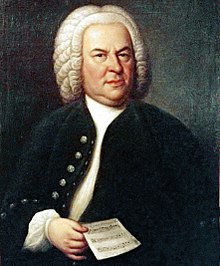
- 20 Elijah, prophet (Commemoration) R – LCMS
- 21 Ezekiel, prophet (Commemoration) R – LCMS
- 22 St. Mary Magdalene (Lesser Festival) W
- 23 Birgitta of Sweden, 1373 (Commemoration) W – ELCA
- 24
- 25 St. James the Elder, Apostle (Lesser Festival) R
- 26
- 27
- 28 Johann Sebastian Bach, 1750, musician (Commemoration) W
- Heinrich Schütz, 1672; George Frederick Handel, 1759; musicians (Commemoration) W
- 29 Mary, Martha, and Lazarus of Bethany (Commemoration) W
- Olaf, King of Norway, martyr, 1030 (Commemoration) R – ELCA
- 30
- 31 Joseph of Arimathea (Commemoration) W – LCMS
August
- 1
- 2
- 3 Joanna, Mary, and Salome, myrrh-bearing women (Commemoration) W – LCMS
- 4
- 5
- 6 Transfiguration of Our Lord (Festival) W
- 7
- 8 Dominic, priest, founder of the Order of Preachers 1221 (Commemoration) W – ELCA
- 9
- 10 Lawrence, deacon, martyr 258 (Commemoration) R
- 11
- 12 Claire, renewer of the Church, 1253 (Commemoration) W – ELCA
- 13 Florence Nightingale, 1910; Clara Maass, 1901; renewers of society (Commemoration) W – ELCA
- 14 Maximilian Kolbe, 1941; Kaj Munk, 1944, martyrs (Commemoration) R – ELCA
- 15 Mary, Mother of Our Lord (Lesser Festival) W
- 16 Isaac, patriarch (Commemoration) W – LCMS
- 17 Johann Gerhard, theologian, 1637 (Commemoration) W – LCMS
- 18

- 19 Bernard, Abbot of Clairvaux, hymnwriter, theologian 1153 (Commemoration) W – LCMS
- 20 Bernard, Abbot of Clairvaux, hymnwriter, theologian 1153 (Commemoration) W – ELCA
- Samuel, prophet (Commemoration) R – LCMS
- 21
- 22
- 23
- 24 St. Bartholomew, Apostle (Lesser Festival) R
- 25
- 26
- 27 Monica, mother of Augustine 387 (Commemoration) W – LCMS
- 28 Augustine, Bishop of Hippo, 430 (Commemoration) W
- Moses the Black, monk c. 400 (Commemoration) W - ELCA
- 29 The Martyrdom of St. John the Baptist (Lesser Festival) R – LCMS
- 30
- 31
September
- 1 Joshua, prophet (Commemoration) R – LCMS
- 2 Nikolaj Frederik Severin Grundtvig, bishop, renewer of the church, 1872 (Commemoration) W – ELCA
- Hannah, matriarch (Commemoration) W – LCMS
- 3 Gregory the Great, Bishop of Rome, 604 (Commemoration) W – LCMS
- 4 Moses, prophet (Commemoration)) R – LCMS
- 5 Zechariah, prophet, and Elizabeth, matriarch (Commemoration) R – LCMS
- 6
- 7
- 8
- 9 Peter Claver, priest, missionary to Colombia, 1654 (Commemoration) – ELCA
- 10
- 11
- 12
- 13 John Chrysostom, Bishop of Constantinople, 407 (Commemoration) W – ELCA
- 14 Feast of the Holy Cross (Lesser Festival) R
- 15
- 16 Cyprian, Bishop of Carthage, martyr, c. 258 (Commemoration) R
- 17
- 18 Dag Hammarskjöld, peacemaker, 1961 (Commemoration) W – ELCA

- 19
- 20 Nelson Wesley Trout, bishop, 1996 (Commemoration) W – ELCA
- 21 St. Matthew, Apostle and Evangelist (Lesser Festival) R
- 22 Jonah, prophet (Commemoration) R – LCMS
- 23
- 24
- 25
- 26
- 27
- 28
- 29 St. Michael and All Angels (Lesser Festival) W
- 30 Jerome, translator, teacher, 420 (Commemoration) W
October
- 1
- 2
- 3
- 4 Francis of Assisi, renewer of the church, 1226 (Commemoration) W – ELCA
- Theodor Fliedner, renewer of society, 1864 (Commemoration) W – ELCA
- 5
- 6 William Tyndale, translator, martyr, 1536 (Commemoration) R – ELCA
- 7 Henry Melchior Muhlenberg, missionary to America, 1787 (Commemoration) W
- 8
- 9 Abraham, patriarch (Commemoration) W – LCMS
- 10
- 11 St. Phillip, deacon (Commemoration) W – LCMS
- 12
- 13
- 14 Day of Thanksgiving (Canada) W – ELCA
- Massie L. Kennard, renewer of the church, 1996 (Commemoration) W – ELCA
- 15 Teresa of Ávila, teacher, renewer of the church, 1582 (Commemoration) W – ELCA
- 16
- 17 Ignatius, Bishop of Antioch, martyr, c. 115 (Commemoration) R
- 18 St. Luke, Evangelist (Lesser Festival) R
- 19
- 20
- 21
- 22
- 23 James of Jerusalem,brother of Jesus and martyr, c. 62 (Lesser Festival) R

- 24
- 25 Lydia, Dorcas (Tabitha), and Phoebe, faithful women (Commemoration) – LCMS
- 26 Philipp Nicolai, 1608; Johann Heermann, 1647; Paul Gerhardt, 1676; hymnwriters (Commemoration) W
- 27
- 28 St. Simon and St. Jude, Apostles (Lesser Festival) R
- 29
- 30
- 31 Reformation Day (Lesser Festival) R
November
- 1 All Saints Day (Festival) W
- 2
- 3 Martín de Porres, renewer of society 1639 (Commemoration) W – ELCA
- 4
- 5
- 6
- 7 John Christian Frederick Heyer, 1873; Bartholomaeus Ziegenbalg, 1719; Ludwig Ingwer Nommensen, 1918, missionaries (Commemoration) W – ELCA
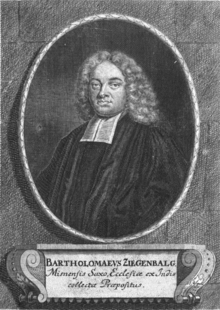
- 8 Johann von Staupitz, priest 1524 (Commemoration) W – LCMS
- 9 Martin Chemnitz, teacher, 1586 (Commemoration) W – LCMS
- 10
- 11 Martin, Bishop of Tours, 397 (Commemoration) W
- Søren Aabye Kierkegaard, teacher, 1855 (Commemoration) W – ELCA
- 12
- 13
- 14 Emperor Justinian, confessor, Emperor of New Rome, 565 (Commemoration) W – LCMS
- 15
- 16
- 17 Elizabeth, Princess of Hungary, 1231 (Commemoration) W – ELCA
- 18
- 19 Elisabeth, Princess of Hungary, 1231 (Commemoration) W – LCMS
- 20
- 21
- 22
- 23 Clement, Bishop of Rome, c. 100 (Commemoration) W
- Miguel Agustín Pro, priest, martyr, 1927 (Commemoration) R – ELCA
- 24 Justus Falckner, 1723; Jehu Jones, 1852, William Passavant, 1894, priests (Commemoration) W – ELCA
- 25 Isaac Watts, hymnwriter, 1748 (Commemoration) W – LCMS
- 26
- 27
- 28
- 29 Noah, prophet (Commemoration) R – LCMS
- 30 St. Andrew, Apostle (Lesser Festival) R
December
- 1
- 2
- 3 Francis Xavier, missionary to Asia, 1552 (Commemoration) W – ELCA
- 4 John of Damascus, priest, confessor 749 (Commemoration) R
- 5
- 6 Nicholas, Bishop of Myra, c. 342 (Commemoration) W
- 7 Ambrose, Bishop of Milan, 397 (Commemoration) W
- 8
- 9
- 10
- 11
- 12
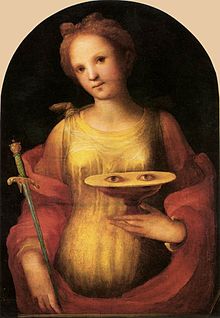
- 13 Lucia, martyr, 304 (Commemoration) R
- 14 John of the Cross, renewer of the church, 1591 (Commemoration) W – ELCA
- 15
- 16 Las Posadas, Mexico (Lesser Festival) P – ELCA
- 17 Daniel and the Three Young Men, prophets, (Commemoration) R – LCMS
- 18
- 19 Adam, patriarch, and Eve, matriarch (Commemoration) W – LCMS
- 20 Katharina von Bora, religious, 1552 (Commemoration) W
- 21 St. Thomas, Apostle (Lesser Festival) R – LCMS
- 22
- 23
- 24 Christmas Eve (Festival) W
- 25 The Nativity of our Lord (Festival) W
- 26 Stephen, Deacon and Martyr (Lesser Festival) R
- 27 St. John, Apostle and Evangelist (Lesser Festival) W
- 28 The Holy Innocents, martyrs (Lesser Festival) R
- 29 David, prophet (Commemoration) R – LCMS
- 30
- 31
Notes
- ^ Phillip Pfatteicher, Festivals and Commemorations, 132.
- ^ Lutheran Book of Worship: Minister’s Desk Edition, 14.
- ^ [http://www.elca.org/worship/faq/occasional_services/commemorations.html ELCA Frequently Asked Questions on Worship
- ^ Pfatteicher, p. 20
- ^ Pfatteicher, Festivals and Commemorations, 19
- ^ Pfatteicher, Festivals and Commemorations, 19
References
- Inter-Lutheran Commission on Worship. Lutheran Book of Worship. Augsburg Fortress Press, 1978.
- Inter-Lutheran Commission on Worship. Lutheran Book of Worship: Minister's Desk Edition. Minneapolis; Augsburg Fortress Press, 1978.
- Evangelical Lutheran Church in America. Evangelical Lutheran Worship - Final Draft. Augsburg Fortress Press,2006.
- Lutheran Church - Missouri Synod. Lutheran Worship. Concordia Publishing House, 1982.
- Lutheran Church - Missouri Synod. Lutheran Service Book. Concordia Publishing House, 2006.
- Pfatteicher, Philip H. Festivals and Commemorations: Handbook to the Calendar in Lutheran Book of Worship. Minneapolis: Augsburg Fortress Press, 1980.
